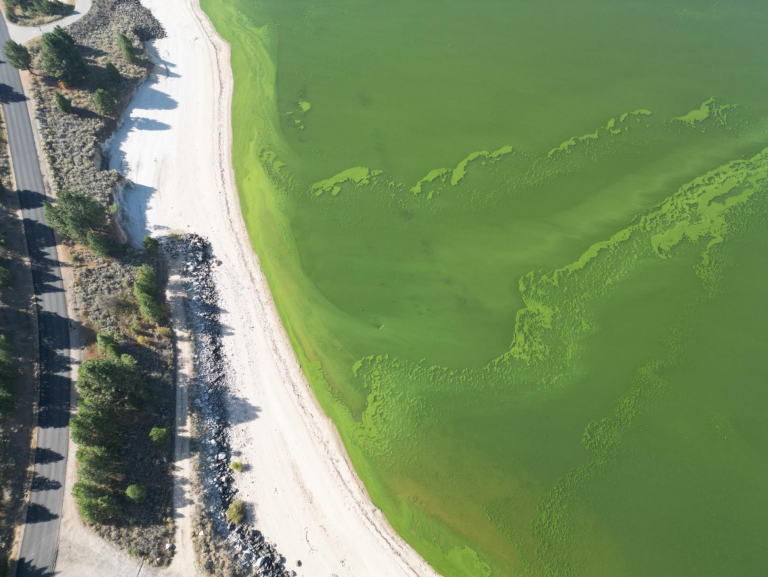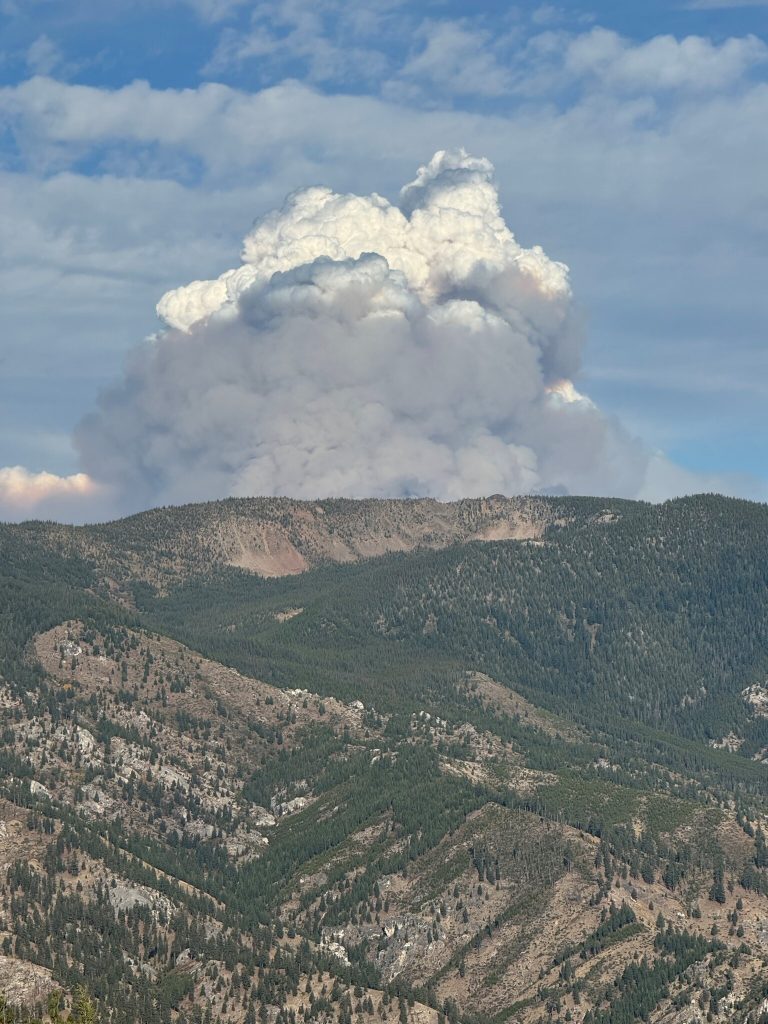Pet owners should keep animals away from cyanobacteria blooms in Lake Cascade as thick mats of the toxic chemical-producing bacteria blanket beaches near Cascade.Tests taken by the Idaho Department of Environmental Quality in the southern end of Lake Cascade and at Kelly’s Whitewater Park found toxin levels that were below the threshold for a health advisory for the second time this year.Dogs and other animals, however, are more susceptible to the toxins and should stay away from the water.“Anytime there are even a low level of toxins, pet owners should exercise caution,” said DEQ Senior Water Quality Standards Scientist Elizabeth Spelsberg.While the results were below the threshold currently set by DEQ, the toxin levels from recent samples would have triggered an advisory based on a 2017 plan used for previous lake health advisories.The samples from the Blue Heron Campground on Lake Cascade would have “barely exceeded” the threshold for an advisory for one type of toxin, Spelsberg said.DEQ changed the thresholds for issuing health advisories in 2019 when the EPA updated its recreational thresholds to represent more recent data, she said.DEQ does not have guidelines for animal related advisories, but advises caution at any concentration of toxins.“Dog fur acts as a filter that collects and concentrates cyanobacterial cells while in the water and dogs receive a concentrated dose of cells from licking their fur after swimming in a water body with an ongoing bloom,” according to the DEQ Cyanobacteria Response Plan.Dogs are also likely to drink water with cyanobacteria in it.Symptoms include vomiting, diarrhea, loss of appetite, swelling, stumbling, seizures, convulsions, disorientation, rashes or hives.Water on the south end of the lake has the highest concentration of cyanobacteria and scum typical of cyanobacteria blooms, including the telltale smell of rotting material.“The yuck factor is high,” said Lenard Long of the group Friends of Lake Cascade.It’s a problem that has persisted for years, with health advisories issued in every year from 2018 through 2021.“Not taking bloom prevention seriously is now making spring and late summer blooms the norm,” Long said.







